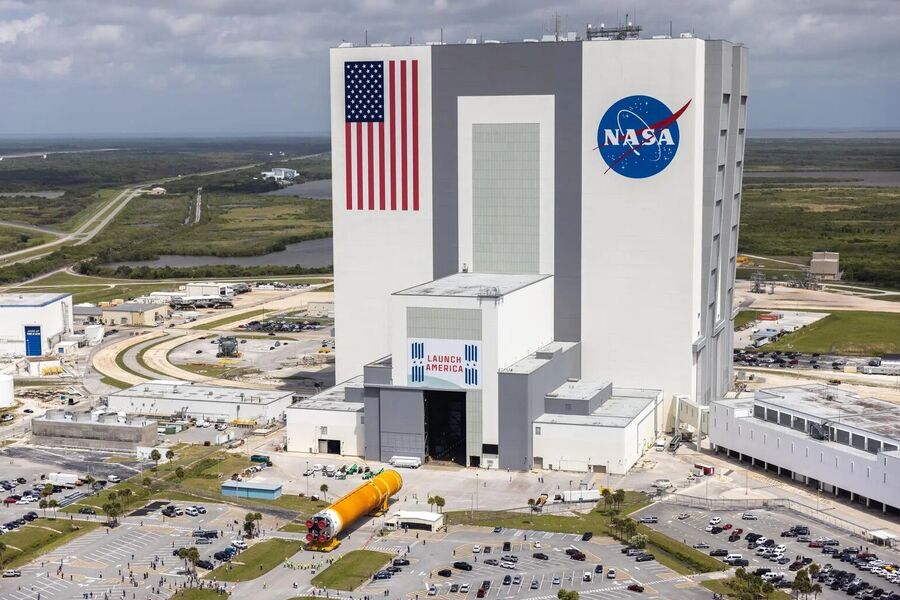NASA Bold Plan to Expand KSC into into into Multi-User Spaceport
Cape Canaveral, FL — May 2025
NASA, in partnership with Space Florida, is preparing to transform nearly 784 acres of land at Kennedy Space Center (KSC) into a next-generation hub for commercial space activity, research, tourism, and infrastructure. A newly released Environmental Assessment (EA) outlines the scope and environmental considerations of the proposed development, known as the Space Commerce District.
The project is part of a long-term strategy to position KSC as a multi-user spaceport, welcoming both government and private aerospace ventures. If approved, the plan would allow for construction of commercial aerospace facilities, laboratories, office buildings, visitor-serving amenities, and support infrastructure—all while meeting strict environmental protection standards.
From Shuttle Legacy to Commercial Future
Following the retirement of the Space Shuttle program in 2011, NASA began transitioning KSC from a single-user launch complex to a collaborative spaceport open to commercial operators. That vision was first outlined in the 2012–2032 Master Plan, with the Space Commerce District emerging as a key development zone.
KSC is already home to more than 90 commercial partners and over 250 partnership agreements. Companies such as SpaceX, Boeing, and Blue Origin have established significant operations on-site. The Space Commerce District, backed by the Florida Department of Transportation and developed by Space Florida, builds on this momentum.
The EA evaluates the potential impact of development across 16 land parcels totaling approximately 783.7 acres. Conceptual designs include height limits of up to 200 feet, as well as plans for staging areas, stormwater systems, and wetland protections.
Goals of the Space Commerce District
According to NASA, the primary objectives of the plan include:
- Supporting NASA’s mission while leveraging underutilized land for commercial growth
- Reducing the cost of access to space by improving infrastructure
- Allowing future flexibility for evolving industry needs
- Preserving environmental and cultural resources within development areas
Each proposed facility will be required to meet regulatory compliance and demonstrate responsible land use.
Emphasis on Environmental Responsibility
The EA includes a robust set of Best Management Practices (BMPs) to ensure the surrounding ecosystem is protected. Key safeguards include:
- Use of amber LED lighting to protect nesting sea turtles
- Construction on previously disturbed land whenever possible
- Strict stormwater and dewatering management protocols approved by the Florida Department of Environmental Protection
- Wetland coordination with the U.S. Army Corps of Engineers
- Compliance with permits such as the National Pollutant Discharge Elimination System (NPDES) and Environmental Resource Permits (ERP)
NASA officials emphasize that environmental stewardship remains central to any construction effort within the district.
Alternatives and Cumulative Impacts
The EA evaluated two primary options: taking no action, which would maintain the current level of commercial use without coordinated planning, and the proposed plan, which offers a comprehensive, managed approach to long-term growth.
Other development scenarios were dismissed due to location limitations or inconsistencies with land-use designations.
In addition to evaluating the district’s direct impact, the EA reviewed potential cumulative effects from other nearby projects. These include:
- Airbus U.S. expansion for spacecraft assembly
- A 15-year redevelopment plan for the Kennedy Space Center Visitor Complex
- Exploration Park North’s Astronaut Training Center
- Amazon’s Project Kuiper processing facility
- SpaceX’s 100-acre Roberts Road expansion
- Blue Origin’s growing rocket production complex
Despite overlapping construction timelines, the EA found no significant cumulative environmental impacts when proper safeguards are in place.
Public Input and Next Steps
NASA will continue to assess individual development proposals through its KSC Site Plan Review and Environmental Checklist processes. Each future project must secure permits, comply with environmental standards, and align with the goals of the Space Commerce District.
The public comment period for the EA runs through the end of May 2025. NASA’s final decision on whether to move forward with the full implementation of the plan will follow shortly thereafter.
“America’s spaceport is open for business,” said former NASA Administrator Bill Nelson. “This development plan ensures that as we go forward to the Moon and Mars, we’re also creating jobs and opportunity right here on Earth.”
